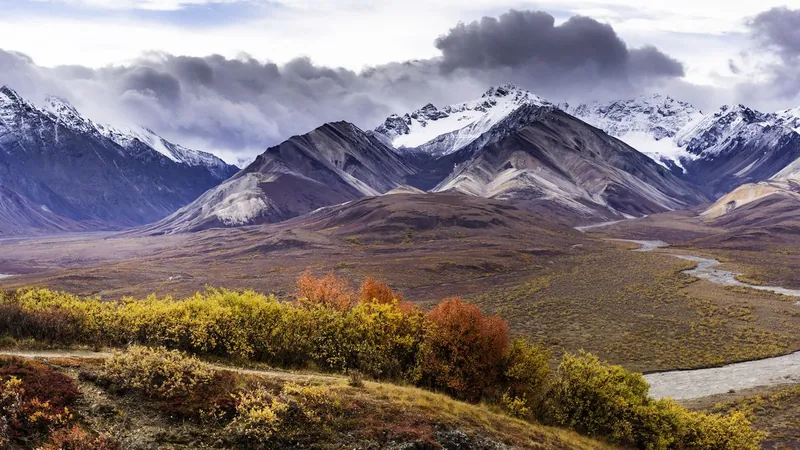
Hidden Secrets of Denali: The Formation of America’s Highest Mountain Revealed!
2024-12-23
Author: Wei
Hidden Secrets of Denali: The Formation of America’s Highest Mountain Revealed!
New groundbreaking research has unveiled the intriguing origins of the Denali Fault, the geological feature that helped shape Denali, North America’s tallest peak. Scientists have traced its roots back to a monumental clash between ancient land masses that occurred between 72 and 56 million years ago, shedding light on how this natural marvel came to be.
At the heart of this revelation is the understanding that the Denali Fault is not just any fault—it's an ancient suture, marking the junction where two massive land plates converged. The Wrangellia Composite Terrane, an oceanic plate, collided with the western edge of North America and firmly anchored itself there, leading to the profound geological changes we observe today.
Sean Regan, a prominent geoscientist from the University of Alaska Fairbanks and the lead author of a significant paper published in Geology, emphasized the importance of this discovery. “Our understanding of lithospheric growth along the western margin of North America is becoming clearer,” he stated, hinting at the wider implications of this research on geology and tectonics.
The Power of the Denali Fault
The Denali Fault is classified as a strike-slip fault, indicative of where two pieces of the Earth's crust glide past each other. It became infamous for unleashing a massive magnitude 7.9 earthquake on November 3, 2002, which was so powerful it impacted structures over 1,500 miles away in Seattle. This seismic event was a stark reminder of the fault's powerful nature and its potential to influence far-reaching areas.
To uncover the fault's history, Regan focused on three distinct regions along the fault line: the Clearwater Mountains in southeastern Alaska, Kluane Lake in Canada’s Yukon Territory, and the Coast Mountains near Juneau. These disconnected sites, spanning nearly 620 miles (998 kilometers), provided a unique opportunity to compare geological formations.
The Mysteries of Inverted Metamorphism
Previous studies had proposed that despite their geographical separation, these three sections of the fault were created simultaneously and later shifted apart as tectonic forces acted on them. Regan's research, however, used a rare mineral called monazite—known for its responsiveness to geological conditions—to confirm this hypothesis.
“We showed that each of these three independent inverted metamorphic belts all formed at the same time under similar conditions,” Regan explained. This inverted metamorphism—a phenomenon where rocks formed under intense conditions are found above those formed under more moderate conditions—suggests that tectonic forces have dramatically altered the Earth’s crust in this region.
The implications of these findings are profound. They provide insight into the intricate processes that stitched these once-distant land masses into the North American plate, unraveling a complex history of geological evolution.
Conclusion
The Denali Fault is not just a crack in the Earth’s crust; it’s a powerful reminder of the dynamic and ever-changing nature of our planet. As scientists continue to delve deeper into its history, we gain not only a greater understanding of Denali but also a broader knowledge of our Earth's tectonic landscape. Future research may reveal even more secrets lurking beneath the surface, compelling us to rethink our understanding of geological formations and their implications for seismic activity across North America. Stay tuned for more revelations!


 Brasil (PT)
Brasil (PT)
 Canada (EN)
Canada (EN)
 Chile (ES)
Chile (ES)
 España (ES)
España (ES)
 France (FR)
France (FR)
 Hong Kong (EN)
Hong Kong (EN)
 Italia (IT)
Italia (IT)
 日本 (JA)
日本 (JA)
 Magyarország (HU)
Magyarország (HU)
 Norge (NO)
Norge (NO)
 Polska (PL)
Polska (PL)
 Schweiz (DE)
Schweiz (DE)
 Singapore (EN)
Singapore (EN)
 Sverige (SV)
Sverige (SV)
 Suomi (FI)
Suomi (FI)
 Türkiye (TR)
Türkiye (TR)